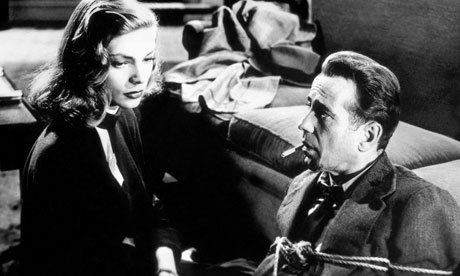Howard Hawks
Howard Hawks entrance into Hollywood begun as a producer in early 1920’s at Paramount, he rose to the top and begun directing features at Fox Studios in 1926. Thoroughly getting involved in all aspects of production, he supposedly altered screenplays and would film improvised scenes which had yet to go through early Hollywood’s infamous filter, Motion Picture Producers Association (Hays Office) censorship authorities. His unique sentimental, comic and sincere vision has earned his rightful place as one of Hollywood’s greats.
The 1932 film adaptation of ‘Scarface’ was adapted from Armitage Trail’s 1929 novel ‘Scarface’ of the same name. Rumoured to be based on Al Capone’s life, the Hays Office asked for several alterations to the script. Executive producer Howard Hughes reportedly told them to go ahead “make it as realistic, as grisly as possible.” It ranks with other pioneering 1930’s American gangster films ‘Little Caesar’ (1930) and ‘Public Enemy’ (1931). Al Capone is rumoured to have liked the movie so much that he owned his own copy. Hawks was showcasing his worth as a relevant director and would go onto to show natural versatility.
‘Bringing Up Baby’ (1938) was initially not well received and a financial flop that would cause Hawks to be fired from one of the most influential film studios in Hollywood’s golden age RKO. As with a lot of great pieces of cinema, time and progress lent hand to it’s later recognition. The utter complete definition of ‘Screwball Comedy’ featuring the now familiar territory of romantic comedies… ‘Opposites Attract’ it would prove ahead of it’s time. Showcasing Katherine Hepburn and Cary Grant at their best sparring with a mile a minute dialogue and zingy one-liners.
His Girl Friday (1940) highlighted the changing roles of women in the modern workplace and an increase of rivalry between the sexes in 40’s America. A newspaper editor tries to sabotage his former wife and former superstar reporter journalist from settling down into family life with a mundane insurance man. To what extent Howard Hawks was attempting to bring gender issues to the forefront of cinema is uncertain but it has to be noted his films featured strong female leads.
‘Hawksian females’ refers to a film theory analyzing the witty, intelligent and beautiful lead females that graced Howard Hawks films including Katherine Hepburn, Lauren Bacall, Rosalind Russell, Ann Dvorak and Angie Dickinson.
His Girl Friday (1940) is most remembered for its spit fire, breathless dialogue. Hawks’ commented in an interview with Peter Bogdanovich
“I had noticed that when people talk, they talk over one another, especially people who talk fast or who are arguing or describing something. So we wrote the dialogue in a way that made the beginnings and ends of sentences unnecessary; they were there for overlapping.”
His next project ‘To Have and Have Not’ (1944)would define an iconic on and off screen romance. William Faulkner and Jules Furthman worked together on a screenplay which was loosely based on Ernest Hemingway’s 1937 novel.
“You know Steve; you’re not very hard to figure, only at times. Sometimes I know exactly what you’re going to say. Most of the time. The other times… the other times, you’re just a stinker. “
Warner Bros. Studios wanted to further match the success of ‘Casablanca (1942)’, explaining the similarities between both wartime romantic dramas. ‘To Have and Have Not’ (1944) would be one of two projects that Lauren Bacall, Humphrey Bogart and Howard Hawks would work on together. Despite Hawks being famed for both film sets contributing to the romance and eventual marriage, Hawks was rumoured to have initially disapproved, but recognized the on screen irreplaceable chemistry.
By the time filming for ‘The Big Sleep’ (1946) started, Bogart and Bacall were planning to get married. Often noted as the classic film noir it barely featured those characteristics. Although the lack of reflective voice-over narration and clue dropping flashbacks is made up for in abundance by the on-screen scorching romance. “He was standing behind me—we were joking as usual—when suddenly he leaned over, put his hand under my chin and kissed me,” Bacall told People magazine.
Howard Hawks film legacy and body of work proves that there is and has always been room for creative and social freedom in cinema. He worked outside the barriers of studio produced film by not committing to one genre instead placing his signature stamp on many and still managed to capture the attention of mainstream audiences and striving to be innovative.
Howard Hawks’s season at the BFI is running from the 2 – 28 February 2011. For more details, screening times and tickets Click here.
By Yvonne Lamunu

